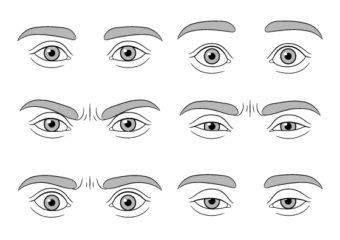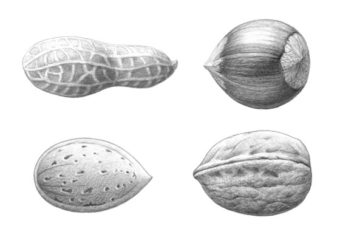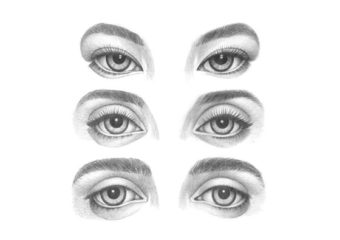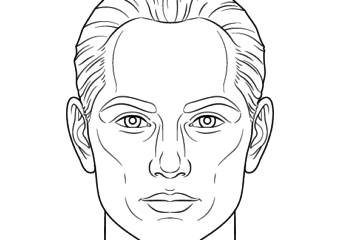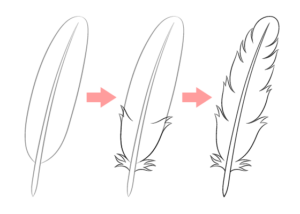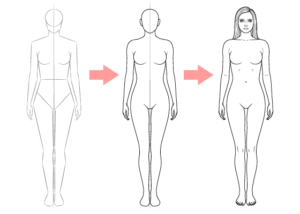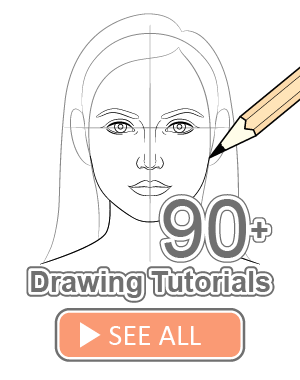How to Draw a Smile Step by Step
This tutorial shows how to draw a smile in twelve steps. It explains how to structure your line drawing and shows an easy way to apply shading.
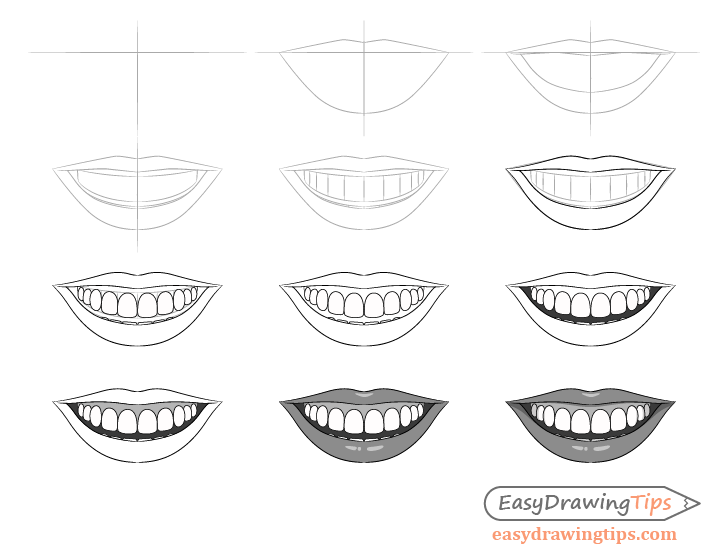
You can create a fairly realistic drawing of a smiling mouth without needing to add too many complex details. The examples in this tutorial show how you can use pretty much the bare minimum lines and shading to get a nice and professional looking drawing (even as a beginner artist).
Start the tutorial in pencil and draw very light lines (just barely visible). You can trace over your lines to darken them once you feel that everything is in the right place.
For the shading portion of the tutorial you can use a pencil, paints or even markers (as long as the markers have enough grey variants).
Step 1 – Draw the Guide Lines for the Smile
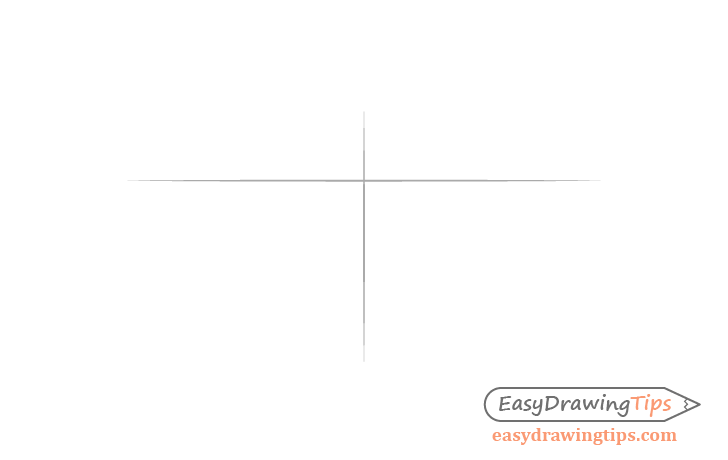
Begin the drawing with a pair of lines, on vertical and one horizontal. The horizontal line should run through where you wish to have the middle of the smile. It’s goal is to help you see if both halves of the mouth are relatively even in width.
Th horizontal line should be positioned at the level where you will add the corners of the mouth. The goal of this line is to help you make sure that the lips are not overly skewed to one side.
Step 2 – Outline the Shape of the Lips
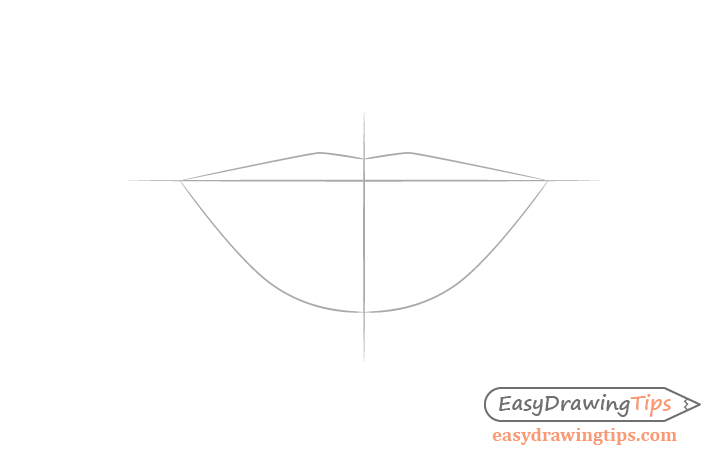
Based on the guide lines in the previous step sketch the outer shape of the mouth (as shown in the above example). At this point leave out any of the smaller curves of the lips. Draw their upper part with just straight liens that look like a flattened letter “M”. Draw bottom portion with a curve that then transitions into a straight line on each of the sides that goes up to the horizontal line (corners of the mouth).
The reason for starting with a simplified sketch like this is that it’s very easy to make and quickly allows you to see if you have the shape you want. If not you can erase it and start again.
The more details you add the more backtracking you will have to do in case you don’t get the shape you want. So start with the bare minimum.
Step 3 – Outline the Shape of the Mouth
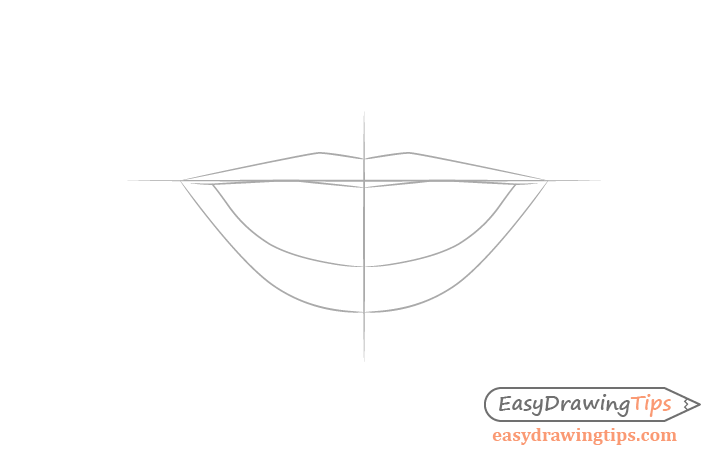
Inside the outer drawing of the lips add the opening of the mouth/inner shape of the lips. You can again make this somewhat simplified using straight lines for the upper portion.
To keep your drawing from getting too cluttered you can erase the horizontal guide line once you are finished with this step.
Step 4 – Outline the Combined Shape of the Teeth
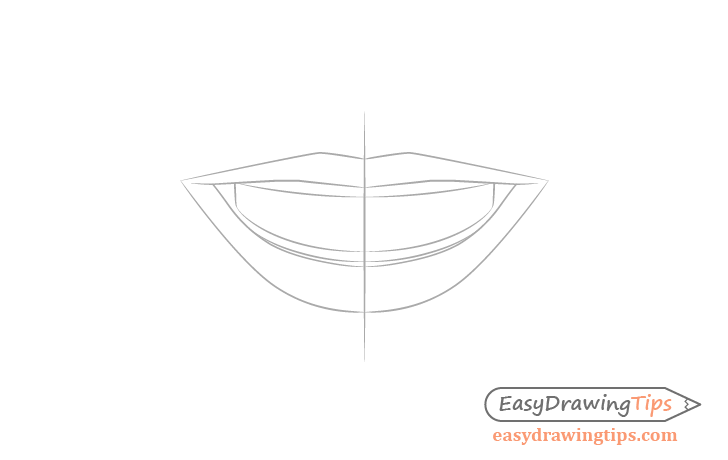
Inside the mouth add the outline of the upper row of teeth as well as a hint of the bottom row.
Generally the teeth in the front will be longer and the ones in the back shorter. This will further be emphasized by perspective as it will make the back teeth appear smaller.
For more on perspective see:
Perspective Drawing Tutorial for Beginners
Due to the angle the mouth is drawn from and the shape of the jaw the rows of each row of teeth will also have a curve to it. Take this into account as well when drawing them.
Step 5 – Space Out the Teeth
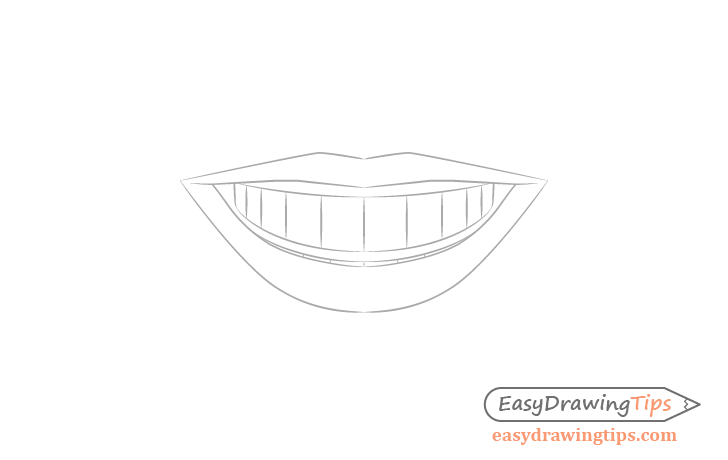
Before drawing out each individual tooth draw some vertical divider lines to estimate their size.
Keep in mind that the teeth in the back will be partially hidden behind other teeth and will appear narrower. The front teeth are also generally larger then the sets of teeth close to them.
Once done with this step you should have a pretty much finished construction drawing of the smiling mouth with all of the major parts planned out.
Step 6 – Outline the Organic Shape of the Lips
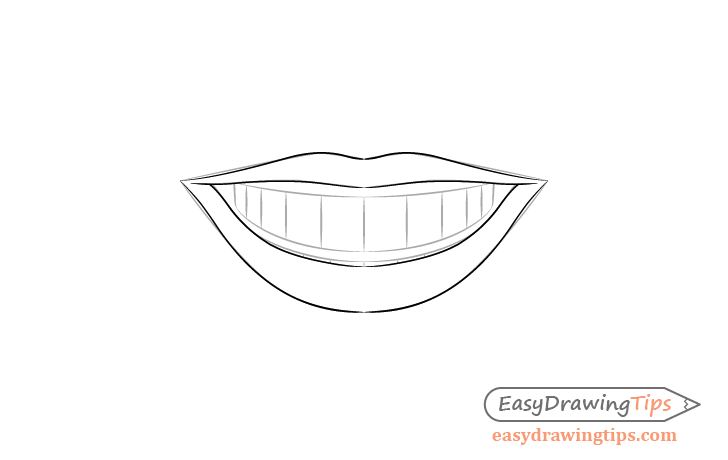
You can now create a more organic outline of the mouth based on the construction drawing.
Begin by outlining the lips and adding their smaller curves. You can make these lines darker than the construction lines but don’t make them dark to the point where they are too difficult to erase. As you may still need to make some corrections.
You can erase the construction lines for that part of the drawing once done.
Step 7 – Draw the Individual Teeth
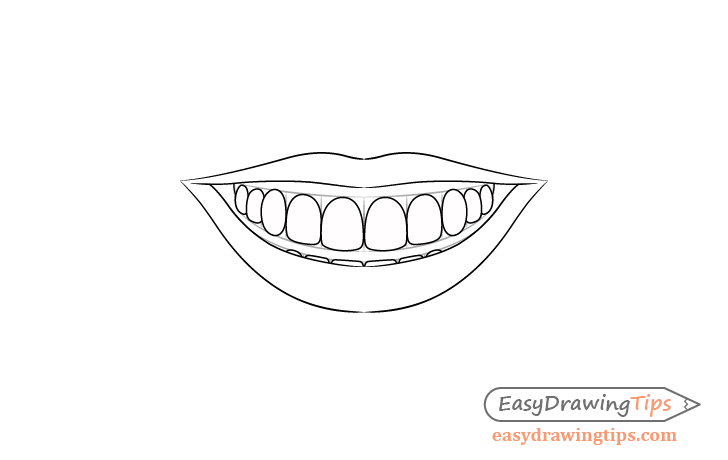
Again based on the construction drawing add add in the individual teeth.
When doing this you can probably see how much easier and faster it is to do this once you have the construction lines to help with their placement.
Step 8 – Clean Up the Drawing
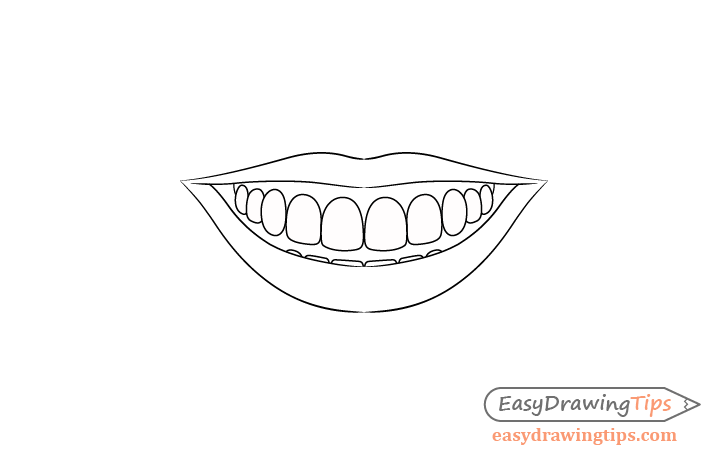
Finally clean up the drawing by erasing all of the construction lines. You can also trace over the cleaned up drawing with a darker pencil stroke or a think black pen/marker.
If you are worried about making a mistake then a pencil is the best option as it can be erased.
Step 9 – Shade the Mouth
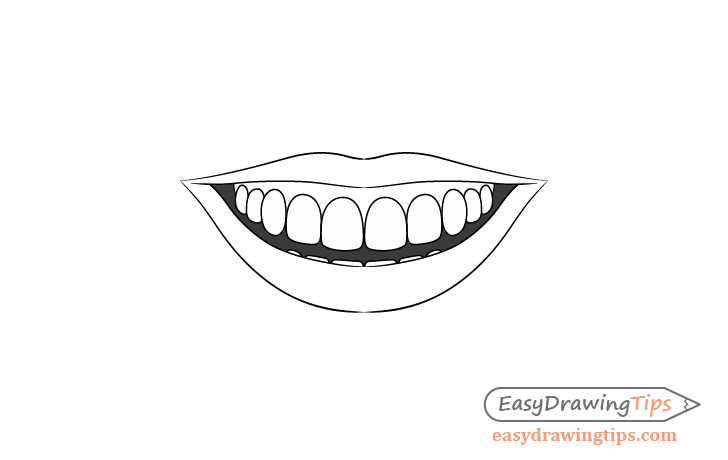
As mentioned earlier this tutorial will focus on the bare minimum shading.
Begin by darkening the inside of the mouth with a very dark grey (you can even just make it black).
Again as mentioned earlier you can do this a pencil, paints or markers. However a pencil is recommended the other two can make it difficult to correct mistakes.
Step 10 – Shade the Gums
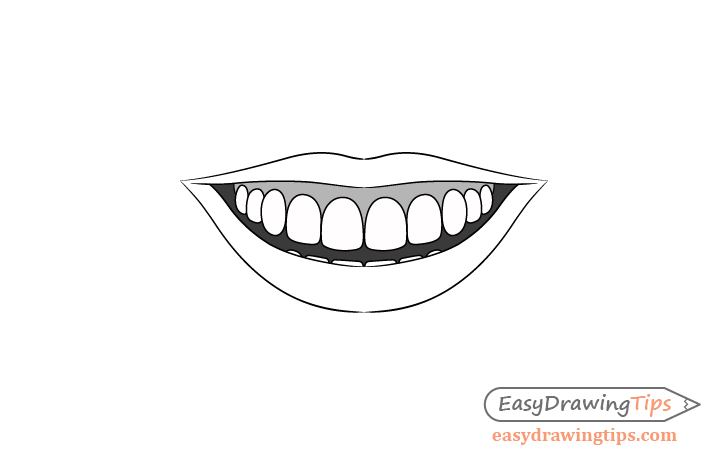
Fill in the gums with a much lighter grey as compared to the inside of the previous one.
Step 11 – Shade the Lips
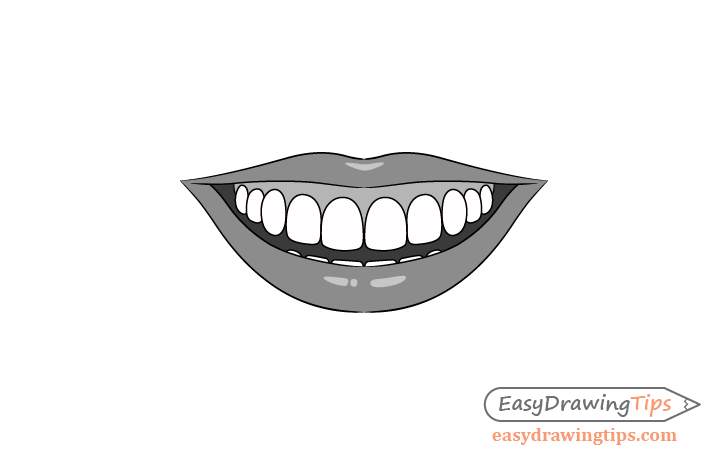
Finally shade in the lips with a grey that is slightly darker than that used for the gums but leave a few light spots similar to the example above. These will be the highlights (light reflecting from the lips).
Highlights can help make the lips look shiny, wet and more three dimensional then if you were to simply shade without them.
Step 12 – Finish the Smile Drawing
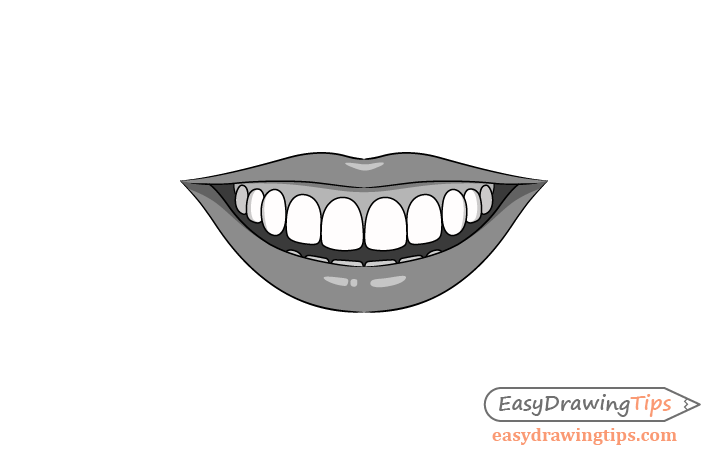
Finally to make the mouth look even more three dimensional you can add some fairly generic shading. In this case the mouth will be shaded as though it’s in fairly common lighting conditions such as a well lit room or daytime outside.
The shadow will be located as follows:
- Below the upper lip (on the gums) – cast by the lip
- In each corner of the mouth on the bottom lip – again cast by the upper lip
- On the teeth towards the back of the mouth (smaller shadows towards the front and fully shaded teeth in the very back) – as less light tends to reach here
- On the bottom row of teeth (fully shade them to be slightly darker than the top row) – again generally less light reaches here
Once done with the shading you should have a finished drawing of a smile.
Conclusion
This tutorial shows how you can use a basic line drawing with simple shading to create a fairly realistic looking drawing of a smile. Of course the same principals and similar drawing steps can also be applied to drawing other parts of the body as well as many other objects. Start with a construction drawing followed by a line drawing and then shading. As you can see from the example in this tutorial even some very simplistic shading makes the smiling mouth stand out a lot more as camped to one done with just lines.
For more on drawing lips see:
For drawing entire faces see:
- How to Draw a Female Face Step by Step Tutorial
- Tips on Drawing the Same Male Face of Different Ages
For drawing the entire body try:
How to Draw the Female Body Step by Step
